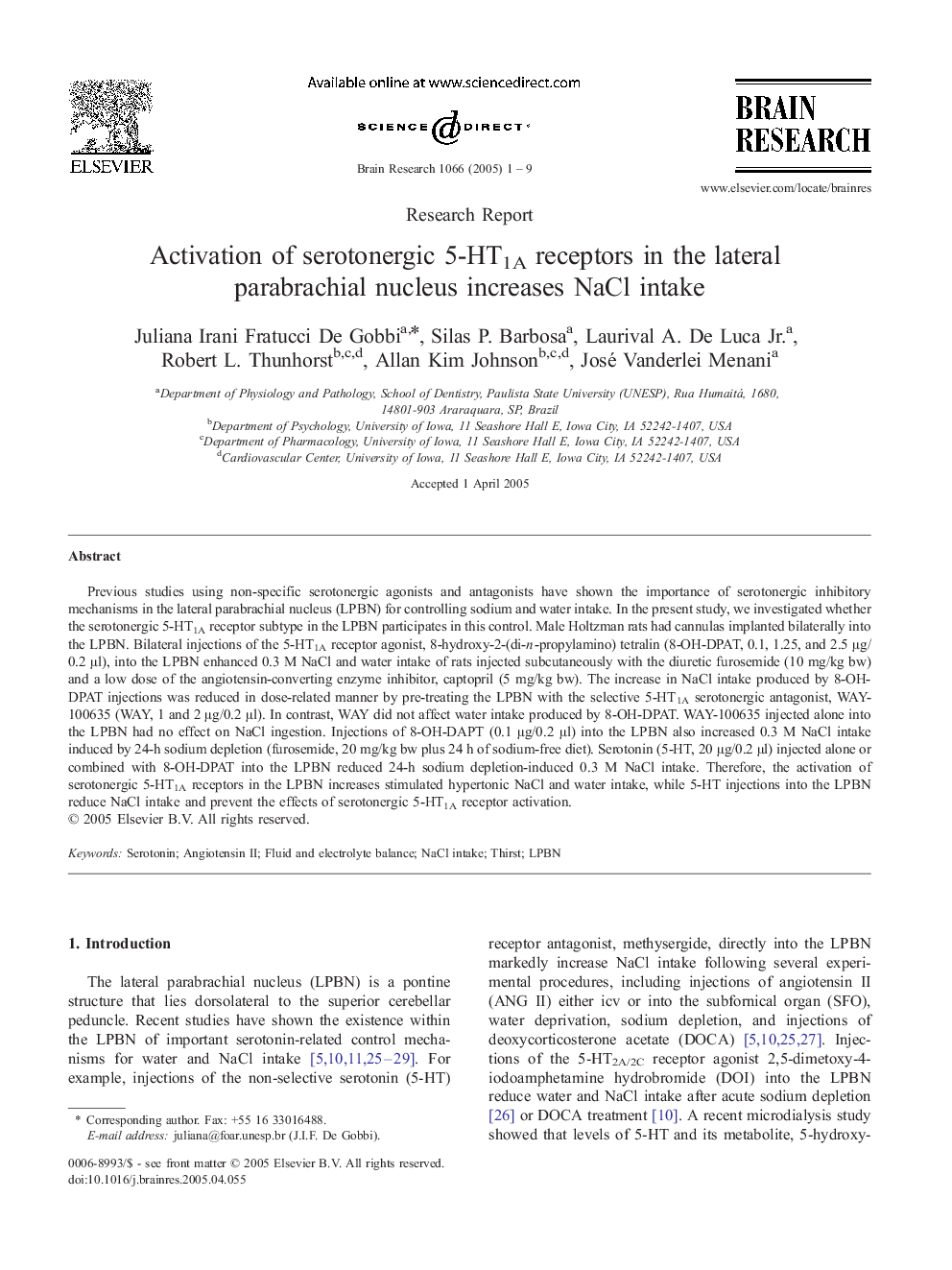| Article ID | Journal | Published Year | Pages | File Type |
|---|---|---|---|---|
| 9415714 | Brain Research | 2005 | 9 Pages |
Abstract
Previous studies using non-specific serotonergic agonists and antagonists have shown the importance of serotonergic inhibitory mechanisms in the lateral parabrachial nucleus (LPBN) for controlling sodium and water intake. In the present study, we investigated whether the serotonergic 5-HT1A receptor subtype in the LPBN participates in this control. Male Holtzman rats had cannulas implanted bilaterally into the LPBN. Bilateral injections of the 5-HT1A receptor agonist, 8-hydroxy-2-(di-n-propylamino) tetralin (8-OH-DPAT, 0.1, 1.25, and 2.5 μg/0.2 μl), into the LPBN enhanced 0.3 M NaCl and water intake of rats injected subcutaneously with the diuretic furosemide (10 mg/kg bw) and a low dose of the angiotensin-converting enzyme inhibitor, captopril (5 mg/kg bw). The increase in NaCl intake produced by 8-OH-DPAT injections was reduced in dose-related manner by pre-treating the LPBN with the selective 5-HT1A serotonergic antagonist, WAY-100635 (WAY, 1 and 2 μg/0.2 μl). In contrast, WAY did not affect water intake produced by 8-OH-DPAT. WAY-100635 injected alone into the LPBN had no effect on NaCl ingestion. Injections of 8-OH-DAPT (0.1 μg/0.2 μl) into the LPBN also increased 0.3 M NaCl intake induced by 24-h sodium depletion (furosemide, 20 mg/kg bw plus 24 h of sodium-free diet). Serotonin (5-HT, 20 μg/0.2 μl) injected alone or combined with 8-OH-DPAT into the LPBN reduced 24-h sodium depletion-induced 0.3 M NaCl intake. Therefore, the activation of serotonergic 5-HT1A receptors in the LPBN increases stimulated hypertonic NaCl and water intake, while 5-HT injections into the LPBN reduce NaCl intake and prevent the effects of serotonergic 5-HT1A receptor activation.
Related Topics
Life Sciences
Neuroscience
Neuroscience (General)
Authors
Juliana Irani Fratucci De Gobbi, Silas P. Barbosa, Laurival A. Jr., Robert L. Thunhorst, Alan kim Johnson, José Vanderlei Menani,
